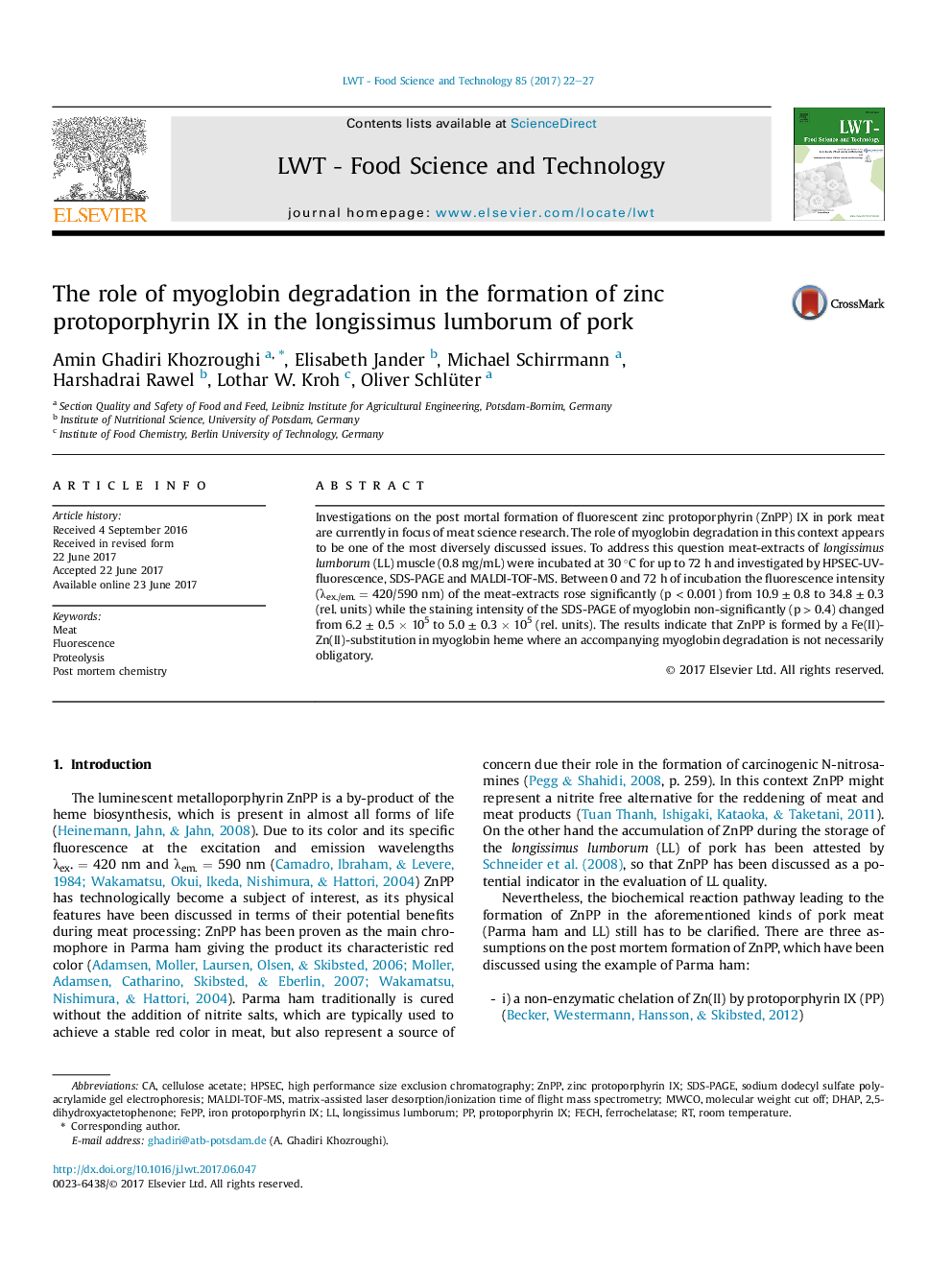| Article ID | Journal | Published Year | Pages | File Type |
|---|---|---|---|---|
| 5768427 | LWT - Food Science and Technology | 2017 | 6 Pages |
â¢Within 72 h incubation the meat extract fluorescence rose due to Fe-Zn replacement.â¢The first 24 h of incubation are rate determining for Fe-Zn replacement (p < 0.001).â¢The changes in myoglobin concentration were clearly non-significant (p = 0.4-0.9).â¢Myoglobin protein degradation is not a necessity for Zn integration in heme.
Investigations on the post mortal formation of fluorescent zinc protoporphyrin (ZnPP) IX in pork meat are currently in focus of meat science research. The role of myoglobin degradation in this context appears to be one of the most diversely discussed issues. To address this question meat-extracts of longissimus lumborum (LL) muscle (0.8 mg/mL) were incubated at 30 °C for up to 72 h and investigated by HPSEC-UV-fluorescence, SDS-PAGE and MALDI-TOF-MS. Between 0 and 72 h of incubation the fluorescence intensity (λex./em. = 420/590 nm) of the meat-extracts rose significantly (p < 0.001) from 10.9 ± 0.8 to 34.8 ± 0.3 (rel. units) while the staining intensity of the SDS-PAGE of myoglobin non-significantly (p > 0.4) changed from 6.2 ± 0.5 Ã 105 to 5.0 ± 0.3 Ã 105 (rel. units). The results indicate that ZnPP is formed by a Fe(II)-Zn(II)-substitution in myoglobin heme where an accompanying myoglobin degradation is not necessarily obligatory.
